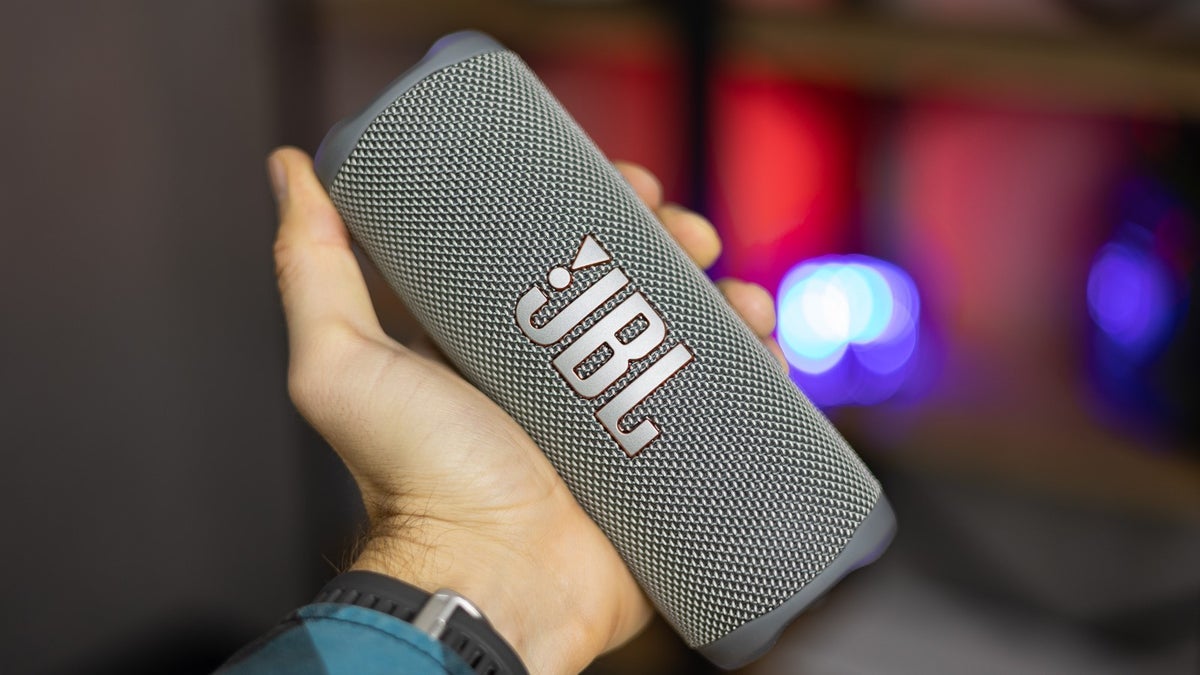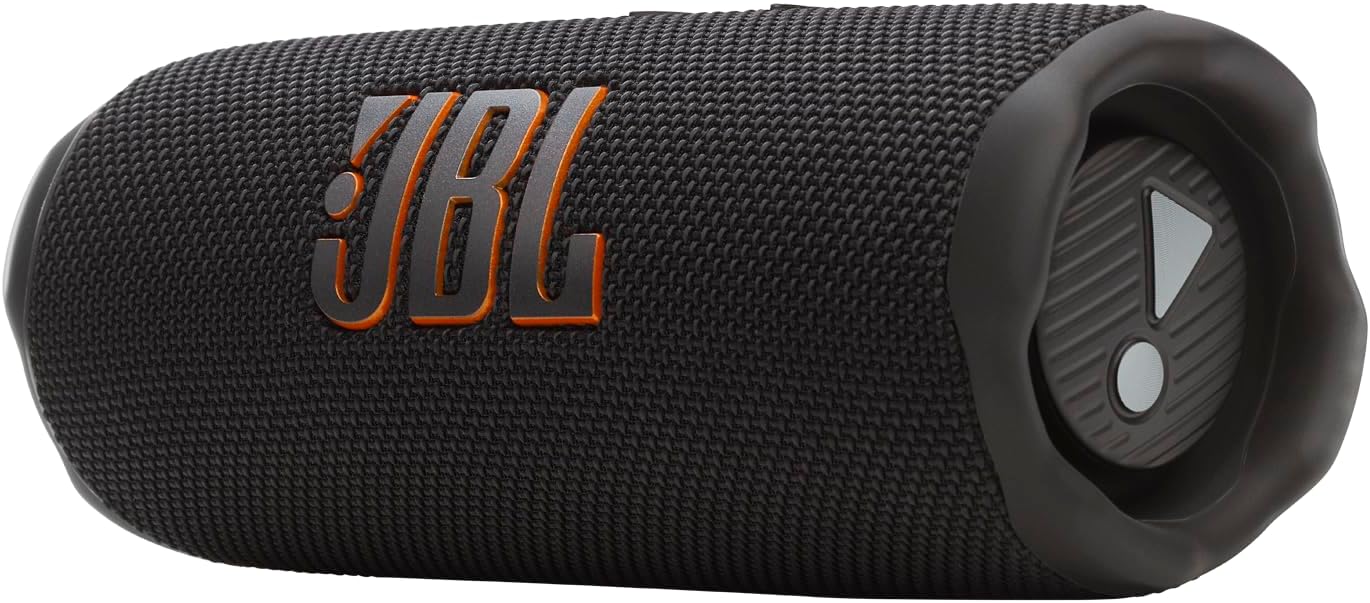There comes a point when we’ve all asked ourselves: “Do I really need the new one, or is the old one still good enough?” And with Bluetooth speakers, that question hits even harder. Because unless something explodes with change, you end up carrying around basically the same speaker—but with a different name. That’s what we thought at first when we lined up the JBL Flip 6 and the JBL Flip 7 on the table. Same cylindrical silhouette, that rugged fabric wrap, passive radiators on the ends.
But then we started poking around, pressing buttons, connecting to playlists, tossing them into bags, hanging them from weird places, and listening—like, really listening. And something clicked. The Flip 7 doesn’t just look like a Flip 6—it moves better, it sounds bolder, it handles rough days like a champ.
So let’s take this apart piece by piece, because yeah, the upgrades are there—but they’re sneaky. If you’re thinking about switching, or just picking one up for the first time, here’s what really matters.
Small design changes with a big impact

At a glance? Yeah, they’re basically twins. Same size, same material, and both with that signature JBL silhouette that’s stayed unchanged for years now. But start using them, and the details begin to matter.
The Flip 7 introduces a completely revamped carrying system that includes a secure seatbelt-style clip, not just a fabric loop. You can feel it snap into place when you hook it to your backpack or bike, and that’s the kind of small but satisfying improvement that tells us JBL thought about how people actually use this thing.
Then there’s the button layout. While the Flip 6 keeps all controls in a single row, the Flip 7 splits them into two sections—one for playback, one for power and connectivity. It’s such a simple change, but when you’re fumbling around at night by a campfire or trying to pause a song with wet fingers at the beach, this makes a huge difference.
Built to take a beating—and then some
Now here’s where the Flip 7 pulls ahead with zero doubt. We always liked the Flip 6’s IP67 rating. That meant it was fully dustproof and could take a dip in water without flinching. Solid. But the Flip 7? That one goes for IP68 certification, which isn’t just about better waterproofing.
With IP68, the Flip 7 can survive being submerged deeper and longer—and it adds more resistance to impacts, scrapes, and drops. This isn’t the speaker that panics when it hits concrete. This is the one you forget on the poolside tile, drop down a trail, or let your kid “accidentally” throw, and it still plays like nothing happened.
It’s tough, seriously tough. And while JBL hasn’t gone out of its way to market that drop resistance, we’ve tossed it around enough times to feel the difference. The Flip 6 holds up fine, but the Flip 7 comes out looking cleaner, less scratched, more like it was built for chaos.
Battery life that quietly steps up

Here’s something unexpected. Same battery on both: 4,800 mAh. So at first, we figured playtime would be the same. But nope.
The Flip 6 gives you about 12 hours of music on a good day, while the Flip 7 stretches that to 14—and with Playtime Boost, it can go up to 16 hours. Now, Playtime Boost is kind of a cheat: it trims the bass and makes the sound thinner, so we wouldn’t recommend it for your next house party. But for podcasts or soft background music? It’ll squeeze out those extra hours.
That longer battery life isn’t just about battery size—it’s smarter power usage. The Flip 7 clearly features more efficient internal circuitry and power management that let it outlast its sibling without any additional weight. We noticed it, especially on longer trips where recharging isn’t always an option.
New software, new problems

Here’s the one part where things get weird. The Flip 6 uses JBL’s PartyBoost protocol, while the Flip 7 ditches that in favor of Auracast. In theory, Auracast should be better—more universal, more future-proof. But in practice?
You can’t pair a Flip 6 with a Flip 7. At all.
So if you’ve already got a few JBL speakers and you like to link them for stereo or surround sound, this upgrade might mess up your setup. The Flip 6 will still pair with the Xtreme 4 or older Charge models, but the Flip 7 is now isolated unless JBL rolls out a backward-compatible fix, which doesn’t seem likely anytime soon.
This won’t matter if you’re just using one speaker, but if multi-speaker parties are your thing? It’s something to think hard about. It’s not a deal-breaker, but it is a headache JBL created for no good reason.
Sound that fills more than space
This is where the Flip 7 finally flexes—and you feel it the moment the bass kicks in. Don’t get us wrong, the Flip 6 still sounds good: it’s loud, it’s clean, and it doesn’t distort even when you push it. But the Flip 7… wow.
It takes the same general sound profile and expands it. More punch in the low end. Crisper mids. A tighter, less muddy high range. And it’s not just about volume—it’s about how controlled and full everything feels, especially between 50–80% volume.
You notice it outside, where a lot of Bluetooth speakers fall flat. The Flip 7 pushes more air and holds its clarity even in big open spaces, making it the better pick for parks, beaches, rooftops—anywhere your music has to fight background noise.
At max volume, both still perform well, but the Flip 7 keeps its composure better. The Flip 6 gets a little shrill at the top end, while the 7 stays smooth and consistent.
Real-life use makes the difference

We’ve already talked about the design and battery, but the daily stuff? That’s what convinced us most. The Flip 6 is easy to carry, yes. But the Flip 7 just… behaves better.
The new clip system, the refined buttons, the tougher outer shell—it all adds up. When you’re using the same speaker every day, those little quality-of-life upgrades start to feel huge.
And yep, same USB-C charging port, same location, same flap for water protection. But we still don’t have an aux port, which we miss sometimes. For most people, Bluetooth is all they’ll use—but if you’re one of those “what if my phone dies?” types, wired options would’ve been nice.
So… Flip 6 or Flip 7?
Okay, time for us to get a little personal here. We’ve used both. A lot. And there’s no avoiding it: the Flip 7 just feels like the version that finally fixes the things we used to live with.
The extra battery life makes weekend trips easier. The better durability gives us peace of mind. The sound is flat-out more impressive. It’s not night and day—but it’s enough that going back to the Flip 6 feels like using a slightly older phone after upgrading.
That said, JBL tripped up hard with the pairing system. We’re not fans of the incompatibility they introduced. It’s frustrating, and it makes upgrading a tougher decision if your current setup involves multiple speakers.
But if you’re starting from scratch? Or if you just need one speaker that goes hard, lasts longer, and sounds bigger than it looks? Yeah, the Flip 7 is the one. We didn’t expect to say that. We thought this would be another “meh” refresh. But nope.
We’ll leave it at this: if you want something safer, more rugged, and better tuned for everyday chaos? Flip 7 wins. It’s louder, lasts longer, and handles life better. That’s what we were waiting for.


